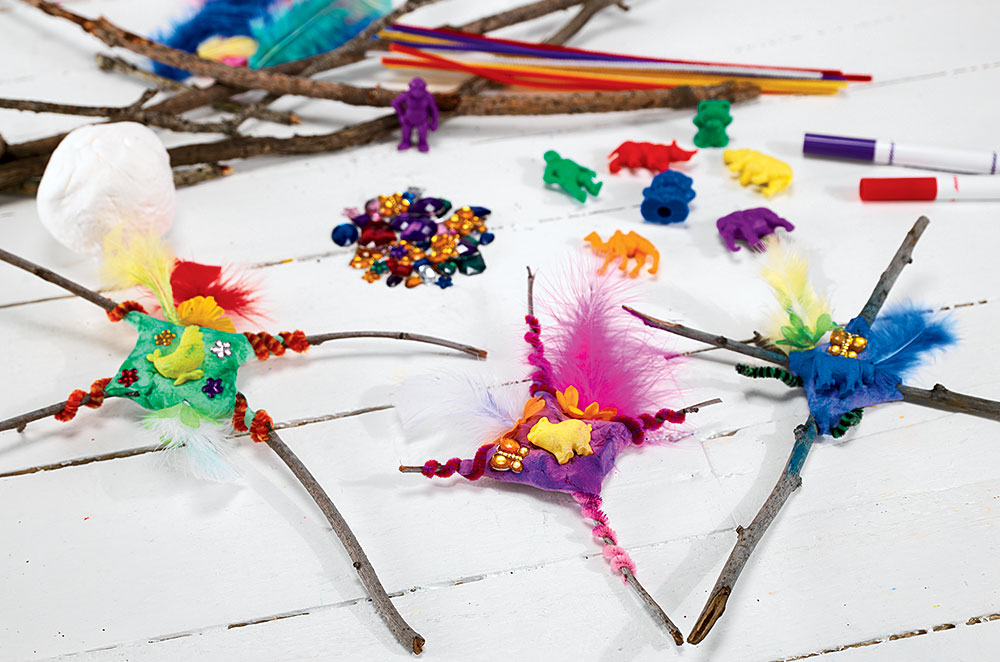Native Spirit Stick
15-30 Minutes: 4 and up
Native Spirit Stick

Intro
This activity is a wonderful way to encourage creative expression and multicultural awareness. As children put their own creative twist on a traditional Native American craft, they'll learn about an important ceremonial object used in rituals and displayed in homes.
Set Up Ideas
You may wish to start this activity by performing a nature walk or by creating a buffet-style spread of feathers, seashells, small rocks and other collage items.
Let’s Get Started
Children will likely need some context to understand the craft they are creating. Discuss with them the origin and history of the spirit stick. You may choose to demonstrate with photos, video, books or song some Native American traditions and ceremonies.
STEP 1
Arrange two sticks in the shape of a cross and tie them together at their intersection using pipe cleaner. Wrap the pipe cleaner tightly to secure the sticks in place.
STEP 2
Use markers to color a handful of putty and knead the putty to blend in the colors, or simply use colored air-dry putty and press the putty onto the intersection of the sticks.
STEP 3
Choose an animal figurine, add a dab of glue to the back of the animal and press it into the putty to hold it firmly in place.
STEP 4
Embellish your spirit stick with collage objects. You might choose natural objects such as shells, grass and leaves or more colorful options such as pom poms, gems and sequins.
Spirit sticks are a traditional Native American craft, and they represent the Native American's culture of showing deep respect and reverence for nature. Spirit sticks have been hung in homes, carried around and used in ceremonies for generations. They have been used by shamans to evoke healing and protection.
![]()
Tips and Tricks
To find collage items for your spirit sticks, consider taking a class nature walk to find acorns, twigs, leaves, small stones, seashells and other interesting pieces that could become collage items.
![]()
Follow up Activity
For more Native American inspired activities to follow this one, consider a weaving activity or creating pots made of air-dry clay. These are both fun cultural crafts that encourage learning, creativity and motor development.


Comments are held for moderation, thank you.